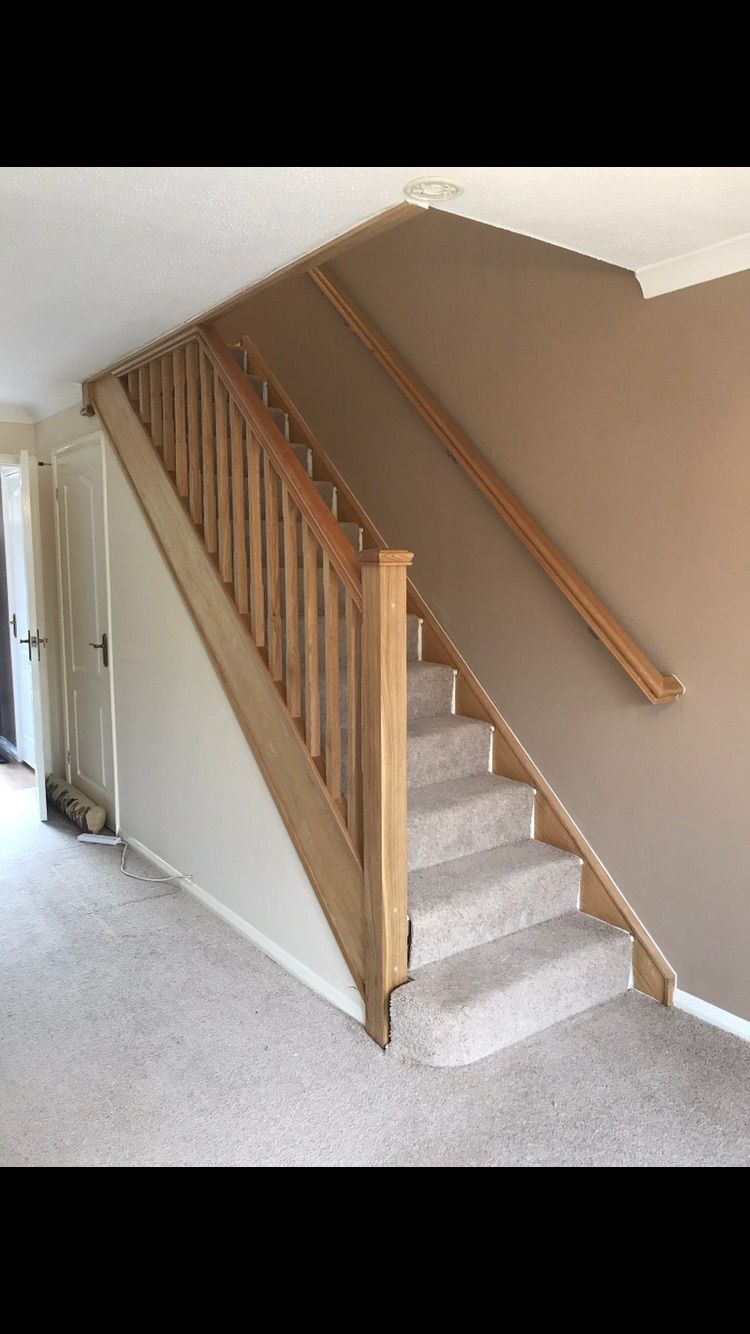
Changing a plain staircase into a functional showpiece is a great way to bring value and visual interest to your property. As a first contact point, your stairs help set the tone for your home’s decor.
Swapping out outdated treads helps with security, but a new finish can also elevate the entrance.
Ways to Assess the State of Your Stairs
Prior to any updates, assess your present staircase in relation to your interior. Always get in touch with planning departments if your home is listed to avoid causing legal issues. In standard buildings, it’s important to examine the stairs for any structural issues. Be clear about what you’d like to achieve—can your current staircase support the level of renovation you have in mind?
Take time to consider your renovation goals and whether your current stairs can handle them.
Question whether your staircase is strong enough for the changes you’re planning.
Be clear on what you want to do and whether your stairway are ready for the changes.
Does your staircase have the stability needed to manage the update?
Before you begin, consider whether your stairs can support your renovation ideas.
Know your goals and check if your staircase can cope with your plans.
Plan your renovation with your staircase’s existing state and stability in mind.
Will your stairs as they are be suitable for the design changes you’re thinking about?
Reflect on your design plans—can your current stairs realistically take the upgrade?
Vintage buildings with classic stairways can often be revitalised with DIY efforts, such as swapping out steps or fitting a new handrail system.
Older homes with wooden staircases can often be updated through DIY updates like replacing the steps or handrails.
You can give timber stairs in older properties a fresh look by replacing treads or fitting a new balustrade.
Simple DIY upgrades like changing the steps or adding a stylish balustrade can transform period staircases.
Traditional wooden staircases often benefit from basic improvements like renewing the treads or new handrails.
Many heritage steps can be refreshed with DIY projects, especially by installing new balustrades or balustrades.
Wooden staircases in traditional homes often benefit from basic improvements like modern or classic balustrade additions.
Upgrading damaged stairs or installing a modern railing can help refresh a traditional stairway.
If you have a traditional stair in a vintage house, some DIY work may be all it takes to bring it back to life.
Basic updates like changing the steps or fitting a balustrade can revitalise or improve a wooden staircase in a heritage house. For a total revamp, it’s wise to get professional advice early on, comparing the financial and design aspects of starting from scratch versus restoring the existing staircase.
If you're planning a total redesign, get expert advice early to understand the difference between rebuilding and refurbishment.
Big changes to your staircase should start with expert advice to evaluate costs and possible outcomes.
When considering a complete redesign, a specialist can help you choose whether to start fresh or upgrade.
Before starting a total staircase makeover, get a pro's opinion on whether to start fresh or improve what's there.
A complete staircase overhaul should benefit from specialist advice to compare the pros and cons of each option.
Talking to a staircase expert early can help you make the right call between starting over or refurbishing.
If a total renovation is on the table, weigh up the time and effort involved with help from a staircase expert.
For major changes, it’s smart to get advice from someone experienced in both refurbishing and rebuilding.
Plan carefully for a complete redesign by get advice from an expert and comparing all options.
What You Need to Know About Staircase Building Regulations
Being familiar with the regulations is key when working on your staircase, whether it’s a simple improvement or a complete overhaul. Like-for-like repairs in heritage properties often aren’t subject to modern building rules.
However, if changing the core structure of the staircase, you must comply with Part K of the Building Regulations, which covers:
If you’re changing the structure of your stairs, you’ll need to comply with Part K of the Building Regulations.
Making big changes to your staircase design means you must adhere to Part K of the construction standards.
Modifying the staircase’s layout or shape requires you to meet the standards set in Part K of the regulations.
If your renovation includes structural changes, you’re legally required to follow Part K standards.
Redesigning the design or arrangement of your staircase means it must follow the rules in Part K.
Part K of the Building Regulations applies when you make any structural updates to your staircase design.
Changing the overall design of your stairs will mean adhering to strict rules under Part K.
Substantial modifications to your staircase will need to meet the legal requirements set out in Part K.
You must comply with Part K standards if you’re changing how your staircase is laid out.
If your project involves modifying the staircase structure of your stairs, Part K regulations will come into effect.
- A compliant staircase must include treads with a depth of no less than 220mm.
- Risers that exceed 220mm are not permitted under building regulations.
- The nosing should project no more than 25 millimetres, and steps must be perfectly level.
- You must allow 2 metres of space above the stairs, though stairs in lofts only need one point eight metres.
- Part K requires that gapped stairs are designed so a 10cm object can’t pass through the opening.
Speak to a certified contractor and check with your local planning office to make sure you're meeting the required standards.
Ways to Improve and Revamp an Outdated Set of Stairs
Typical problems with older staircases are unsteady railings and squeaky treads. Wobbly balustrades often need simple repairs, but sometimes a second stringer is required for extra strength. Light noise issues can usually be fixed, but if the materials are too far gone, a full replacement might be the only option. Traditional stairs with chunky newels can be updated by reducing the newel, but only if it's safe to do so.
Giving a New Feel to Your Stairs
A repaint or swapping in a new balustrade is an easy way to give a lift. Some stairs hide original wood beneath the carpet, ready for restoration.
Before starting work on old staircases, carry out a lead test and use safe techniques. If the stairs are hidden beneath boards, inspect what’s beneath. You may need to restore painted mouldings, and bare wood can be restyled in several ways.
When a Full Stair Replacement Might Be Needed
A full replacement may be more financially viable in the long term if the stairs are in bad condition. You can often replace a staircase in a day—unless you’re modifying the design. Since staircases affect your home’s structural balance, it’s essential to consult a qualified engineer.
Selecting the Best Staircase Layout
Freestanding, spiral, and cantilevered staircases offer individual style to suit any home. Homes with kids or senior residents may benefit from safer risers and solid risers for safety. Get a qualified survey to ensure the staircase design is suitable for your home. Moving or redesigning your staircase can influence adjacent rooms, so a qualified expert can advise on ideal positioning for flow and functionality.
How to Budget for Stair Renovation
Ask different contractors for quotes and check that the breakdown is easy to understand. It may seem cheaper to do it yourself, but every little extra still cost money.
Improving Stair Aesthetics with a Railing Upgrade
Stair width matters—under 1 metre needs one rail, but beyond 1m means a handrail each side. Glass, metal, and wood are all popular for modernising staircases.
Glass balustrades add style and light, but prices can change depending on whether you choose visible or flush-fit fittings.
Using Stairs to Add to Your Home’s Look
Your stairs can either tie into your interior style or act as a centrepiece—choose what fits your home. Black steel staircases match modern materials such as framed glass, while oak tones complement calmer colour palettes.
Using the same wood tone across railings and trim can tie the room together, and subtle spindle choices boost the visual appeal.
Innovative Ways to Use the Space Beneath Your Stairs
- Fit a mini cloakroom under your stairs to improve household function—check with a plumber about what’s possible.
- Custom pull-out units like pull-out drawers are perfect for tidy storage solutions.
- Turn the space under your stairs into a stylish wine display using integrated illumination.
- Create an Under-Stair Workspace – Install a bespoke desk and shelving, read more with sliding doors for concealment.
Transform the space into a discreet work zone with built-in shelves and a custom desk.
Use the area for a compact office setup—add shelving and sliding doors to keep it neat.
A compact workspace and storage combo under the stairs makes a great tucked-away workspace.
Fit a tailor-made workstation under the stairs, complete with a discreet closing system.
Create a discreet work zone by installing a desk and storage behind sliding panels.
Add a made-to-measure desk and shelves to make a clever under-stair work area.
Design a smart workstation with fitted furniture and finish it with neat concealment.
A compact working setup under the stairs is perfect for remote work.
Use bespoke joinery to build an efficient home office setup with sliding door panels.
Turn wasted stair room into a home office with shelves, a desk, and sliding door cover. - Connect your kitchen design with the space beneath the stairs for a smarter layout.
Selecting the Perfect Staircase Lighting
Lighting adds safety while elevating your interior. Some options are:
- Step-level lighting give each step a gentle, stylish illumination.
- Gentle wall lighting at stair height keep the area bright without overpowering it.
- Ceiling lighting gives broad coverage and safety.
Select fixtures that work well without being too bright, to suit the style of the staircase.
Finally:
A purposeful stair redesign can boost both your home's style and practical layout. A good design—whether it’s a simple improvement or full change—will make sure your stairs are useful and look great for years.
 Lark Voorhies Then & Now!
Lark Voorhies Then & Now! Yasmine Bleeth Then & Now!
Yasmine Bleeth Then & Now! Suri Cruise Then & Now!
Suri Cruise Then & Now! Pierce Brosnan Then & Now!
Pierce Brosnan Then & Now! The Olsen Twins Then & Now!
The Olsen Twins Then & Now!